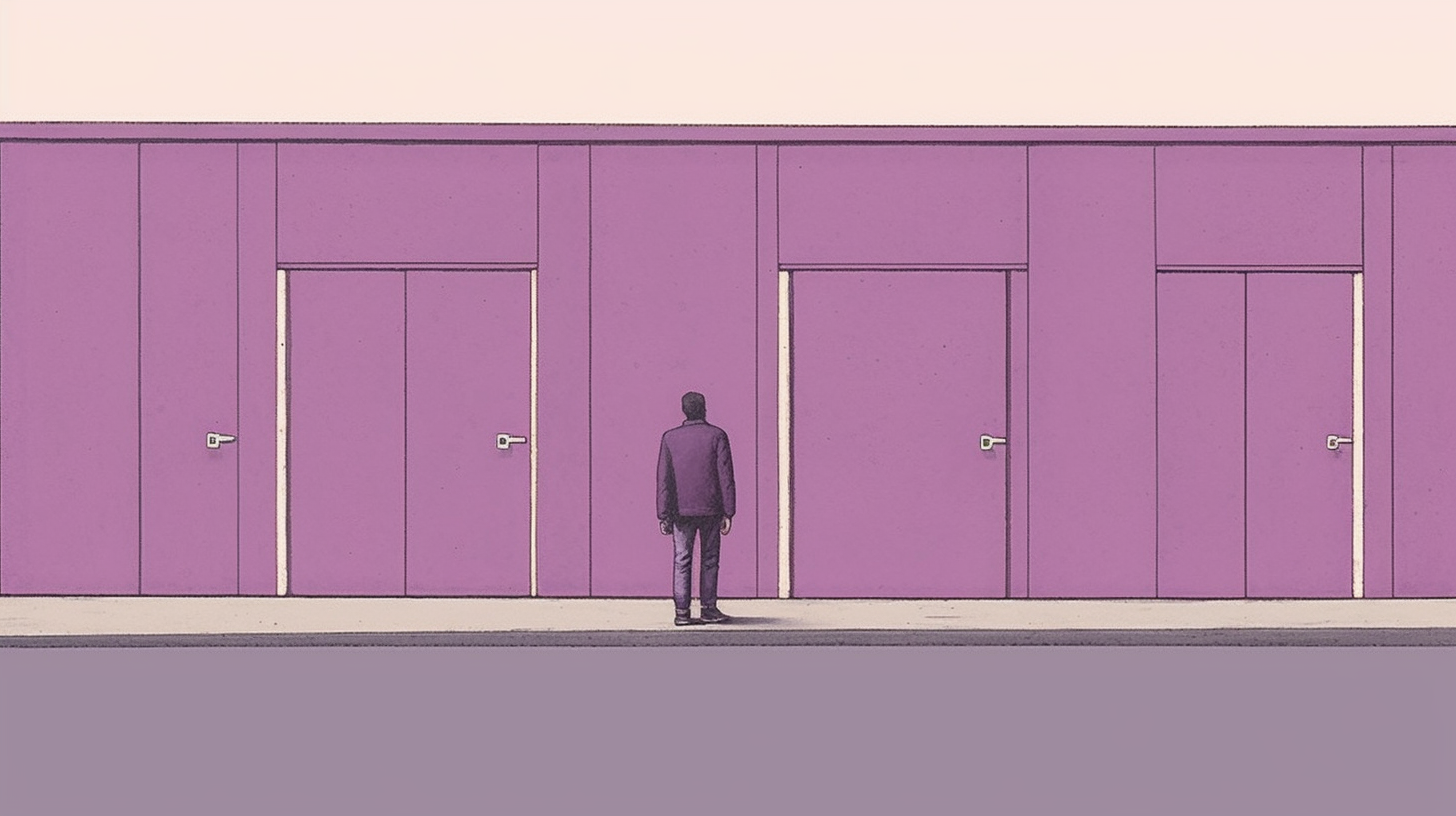Patricio Pace
VP of Business Operations
Great ideas can come from anywhere. We’re building a process to harness that power and propel Pliancy forward.

Patricio Pace
VP of Business Operations

Imagine this: The year is 2028. Los Angeles has just hosted the Olympics. There are 14 Fast & Furious movies. All Sweetgreens are staffed entirely by robots. And Pliancy is seen as one of the top 10 most innovative companies in the United States.
It’s an ambitious goal, and it might feel a little outlandish to suggest, but we’d be foolish not to pursue it.
I’m no stranger to taking chances—though not entirely on purpose. I started my career at a credit union. With no prior experience in retail banking, I prepared thoroughly, did my research, aced the panel interview, and was thrilled to get an offer for an entry-level position. On my first day on the job as I’m going through orientation, the executive vice president pulled me aside and said to me, “You know, Patricio, this is the first time in our 30-year history we’ve skipped over the teller role and hired someone directly as a member service rep without previous experience. We have very high expectations, so don’t let us down.”
It turns out the position wasn’t entry-level after all. I played it cool and just focused on getting up to speed quickly. No pressure!
I’m proud (and a little relieved) to say that I was able to live up to their expectations, eventually working my way up to branch manager before moving on. Now, what does this have to do with making Pliancy a leader in innovation?
Diving headfirst into this challenge taught me the value of ambition—even if it was blind ambition at the time. From the credit union to starting my own consulting business to leading Pliancy’s operations from a single-digit headcount to over 100, the challenges have often seemed insurmountable… until they weren’t.
When I say I want the Pliancy name to be synonymous with trailblazing innovation, it’s not merely for the sake of it. Instead, I’m focused on three primary benefits of an embedded culture of innovation:
– Improved unit economics and efficiency
– Game-changing breakthroughs in product, service delivery, process, and more
– Increased talent density
Innovation means innovation at every level and at varying scales. Small tweaks to our processes can help us increase the value each item, or “unit,” generates for the business. We can do this by reducing costs, increasing production or delivery speed, or by improving the quality of our products. Regardless of how we improve our efficiency, becoming more efficient means we can devote more of our resources and energy to developing novel solutions.
Companies are more likely to achieve breakthroughs across their organizations by innovating rapidly and regularly. This can involve changing who they target (audience, business model), what they do (product, service delivery) or how they do it (process, tooling). Many companies have the potential to innovate; it’s only by doing so quickly and consistently that the results can snowball into changes that are greater than the sum of their parts. At this magnitude, breakthroughs can help companies beat out the competition to dominate, or even redefine, their industries.
Think about the companies that eventually transformed into the tech behemoths we know today. Before they ousted industry incumbents or created brand-new market categories, they were scrappy start-ups with far-fetched ideas, powered by ambitious, imaginative teams. These trail-blazing companies developed reputations for creating environments that embraced inventiveness and experimentation. Like attracts like: innovative companies attract high-performing, creative minds that topple boundaries and push one another to dream even bigger.
What do you picture when you hear the word “innovation”? Most people think of huge product launches, revolutionary business models, or groundbreaking discoveries made in secretive R&D labs. Innovation on a grand scale is important, and those kinds of moonshot ideas propel us forward.
Iterative innovation, though some may consider it unglamorous, is equally vital. Small tweaks to a feature, a workflow, or a client communication can make tremendous cumulative impacts. What some see as “minor” updates help us move faster; improve quality (and therefore perceived value); automate workflows; and turn experiences from impersonal to inspiring for both our team members and our clients.
I want to share an example from when I first joined Pliancy. Things were starting to take off and we were growing fast. Client referrals were coming in hot and it was starting to get challenging to find more talented folks to join our team because our networks were tapped. It was time to make the leap!
I created a quick and dirty recruiting process MVP (minimum viable product) so we could hit the ground running and learn along the way. I threw up a Craigslist ad, set up a mailbox for incoming applications, and created a spreadsheet to track the pipeline.
It was not glamorous but it allowed us to swiftly test ideas and iterate. Who needed to be informed about the process? What pain points did candidates experience? How long was everything taking? As we considered questions like these, we began evolving our recruiting stack to include an applicant tracking system, self-scheduling links, Slack alerts, interview templates, and workflow automations.
Our secret to rapid iteration was a powerful feedback loop that we instituted early on. From the start, we did a post-onboarding interview with every new member of Pliancy to learn what worked and what didn’t, tapping into their wisdom and creativity to improve our system. We were crowdsourcing ideas from the very people experiencing the process.
Each time we made a small tweak, it improved the experience by an incremental amount. We made the experience 5% better. Over time, those 5% improvements compounded upon one another. Our Associate Director of Talent, Jenny Kerdphoca, now leads this process and she continues to source ways to make the experience even better for our candidates and for our hiring managers.
I started us off with something very modest, but thanks to our belief in small-scale innovations (and a lot of hard work from our team members), today we have a world-class recruiting program that is strategic and data-driven. Even in just the past two years, under the People team’s leadership we have reduced time to fill (a key efficiency metric) by 6 business days, a 14% improvement. Iterative innovations like these set the bar ever higher, driving employee satisfaction and retention.
Great ideas are everywhere, but there’s a reason they say ideas are cheap and execution is everything: most fresh ideas die on the vine because people aren’t sure what to do next. This execution gap may be caused by a lack of information, motivation, resourcing, buy-in, or any of a thousand other constraints.
Think back to a time when you had an idea you wished would be implemented. You don’t have to think that far back, do you? Lightbulb moments, large or small, happen all the time.
Here’s one idea I had: about 20 years ago, I was trying to be healthier by cooking more frequently, but keeping the fridge well-stocked was a hassle. Vegetables and dairy went bad before I could use them; I would run out of eggs and not realize it until I was in the middle of a recipe. These frustrating situations made cooking and meal planning exponentially more difficult for me.
Then I was struck by a thunderbolt of inspiration. What if there was a smart fridge that would track its contents for you? When you brought groceries in, you could scan a barcode or RFID tag on the product and your fridge would then automatically know what items it held and how long they would be fresh for. No more running out of butter without an alert. Better make a salad with that tomato before it goes bad on Friday, you’d be reminded. Automagically, my cooking journey would be so much easier.
There were a few not-so-small problems with my idea. To start, I don’t have a background in industrial design, consumer appliance manufacturing, or setting up global supply chains. I also didn’t know how to develop a prototype nor did I have access to millions in capital to spend on R&D. Unfortunately my idea turned into an all-too-common “I wish someone would build that” scenario.
Today, smart refrigerators come with large touch displays and voice-controlled assistants. They’re Wi-Fi connected, and you can even view the contents inside remotely from your phone via embedded cameras. They may not be in every home yet, but both adoption and features are trending up and include things I couldn’t have even imagined when I first conceived the idea.
Sometimes I wonder what could have been. Twenty years ago, if I’d been able to connect my vision with the right skill sets and the right resources, would I be helming a smart fridge empire today?
Okay, maybe a smart fridge empire is a bit lofty, but the point stands. What if we closed the execution gap for folks who had exceptional ideas but didn’t know where to start? Didn’t know how to get traction? And what if we did that at scale?
As Pliancy’s VP of Business Operations, I don’t expect my team to innovate in isolation. We’re inviting the whole company to participate in the innovation process and to contribute their ideas, their perspectives, and their expertise. My goal is to build a frictionless path that will help our colleagues move from ideation to implementation, unlocking the power of their creativity. By anticipating execution gaps and finding ways to bridge them, we will build a pathway to innovation that gets faster and smoother with time.
We’ve already identified some key ways to close the execution gap for our team members:
– Idea evaluation
– Implementation support
– Continuous feedback
Evaluating an idea includes determining what success would look like, projecting the costs and benefits, aligning the idea to Pliancy’s strategic roadmap, and generating a proposal. But because most people don’t have training in these areas, they aren’t set up for success when seeking buy-in—no matter how good the idea is. We can help by creating proposal templates, conducting feasibility studies and analysis, building reporting metrics, or even modeling the performance and impact of an idea before it gets built.
Making an idea into reality requires the right support at the right time, the same way a mechanic needs the right tools for any given job. Instead of sockets and wrenches, our tools are SMEs in project management, analysis, change management, communications, documentation, and more.
With a project management approach that values people over process, our team can develop project plans, define scope, identify contributors, manage timelines, and hold contributors accountable. Plus, no project exists in a vacuum. We must consider change management and clear documentation strategies, even if the shifts seem minor, to make sure the updates are adopted widely and operationalized for the long term.
Improvement is a never-ending process. Whether you’re launching a new product or a new workflow, considering any innovation “one-and-done” is a dangerous trap.
From the evolution of our recruitment pipeline, we know big things happen when we harness the power of feedback loops. Crowdsourcing suggestions allows us to consider a broad spectrum of experiences and opinions in order to improve processes one step at a time.
But feedback loops don’t happen on accident. Organic responses are great, though few may take the initiative to reach out unprompted. It’s critical to embed the feedback process into every project, providing structured opportunities to solicit users’ thoughts. Combined with objective quantitative data, comprehensive feedback loops ensure that we get the full picture of what’s working, what isn’t, and what could be.
“Okay,” you might be thinking, “so what now?”
The honest answer is: we’re working on it. We know evaluation guidance, robust implementation support, and consistent, iterative improvement are key to closing the execution gap. With this knowledge in hand, we will find a way to make our idea (a self-propelling innovation engine) a reality and then use it to help others bring their concepts to life.
It won’t be an easy process or an overnight transformation, but we don’t expect it to be. More important than ease, and more important than speed, is the power of potential. Just like an internal combustion engine, we intend to harness the raw power of explosive ideas, converting that energy into motion and propelling Pliancy toward the future we dream of.

Get updates from Pliancy delivered straight to your inbox

We’ve got the lowdown on due diligence questionnaires. With this explainer in your back pocket, you’ll be able to tackle DDQs with confidence.

Noah Tagliaferri
VP of Growth

Onboarding can be a nightmare for employees. It doesn’t have to be—if you remember who you’re building for.

Tiffany Kress
Head of People

Brands are always evolving, and Pliancy is no stranger to reinvention. We look back on our brand update, six months later.

Kyle Barber
Associate Creative Director


711 Boylston St, 6th Floor
Boston, MA 02116
415 Grand Ave, Suite 105
South San Francisco, CA 94080
265 Canal St, Suite 505
New York, NY 10013
9820 Willow Creek Rd Suite 450
San Diego, CA 92131
1012 Rio Grande St,
Austin, TX 78701